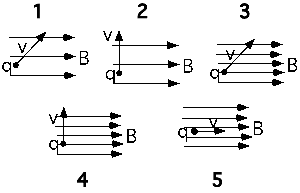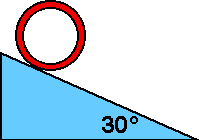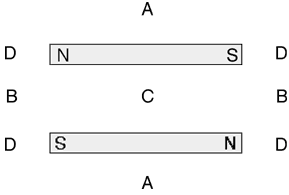Goal: Reason regarding electrodynamics
Source: 283-630 Path of a charge in E&B fields.

A
charge is released from rest in E and B fields. Both fields point along
the x axis. Which of the following statements regarding the charge’s
motion are correct?
- The charge will travel along a straight-line path.
- The charge’s speed will change as it travels.
- The charge will travel in helical path.
- The charge will travel in helical path of increasing pitch.
- The charge will travel in a circle in the x-y plane.
- 1 and 2 only
- 2 and 4 only
- None of the above







Commentary:
Answer
(6) The different responses reveal the extent to which students
understand vector cross products and/or read the problem carefully. Some
students choose #8 because they do not like the way the motion is
expressed. They prefer descriptions such as, the charge first moves in a
straight line until it gets some speed then …